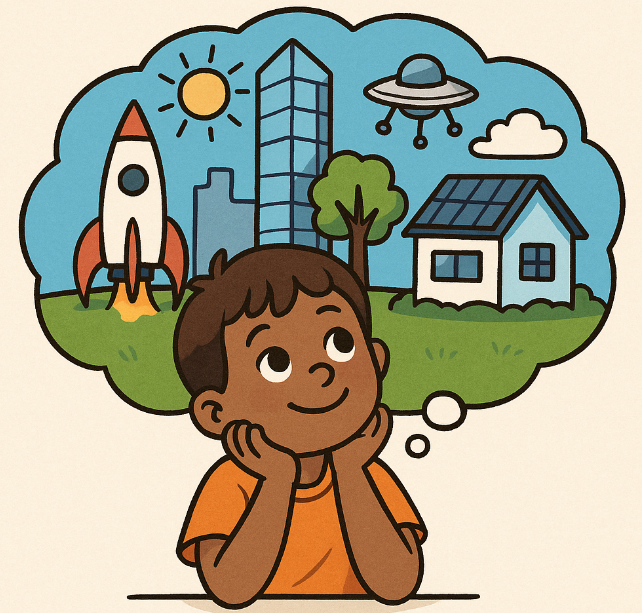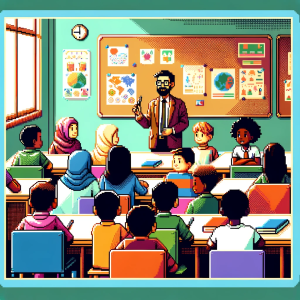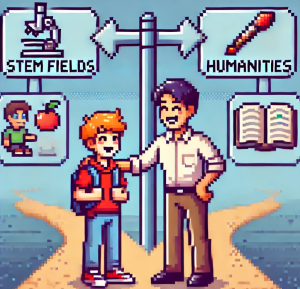
Kids’ Minds Are Bigger Than We Think
A third grader, usually restless, sits utterly still after a mindfulness exercise. For five minutes, she’s calm, present, and—strangely—radiant. The teacher whispers afterward, “It’s like she tapped into something deeper than herself.”
Moments like this can feel magical, but they’re also backed by a growing body of science. Recent psychology research argues that consciousness isn’t just a byproduct of the brain—it may actually be the foundation of everything we know and feel
That’s a big claim, and it matters for kids’ mental health. If consciousness is more than neurons firing, then schools aren’t just shaping behavior and knowledge—they’re shaping how children experience life itself.
Why This Research Matters for Schools
For decades, the dominant model of psychology has treated the brain like a machine: input goes in, output comes out. But that view struggles to explain why experiences like awe, compassion, or sudden calmness during meditation feel so real and transformative.
Here’s what new research suggests:
- The brain is a filter, not the source. Think of it like a radio tuner. The signal—consciousness—is already there. The brain simply tunes it to help kids function day-to-day.
- Moments of silence or play widen the filter. That’s why kids may feel “more alive” when absorbed in art, recess, or mindfulness. These states let more of consciousness flow through.
- Mental health is about connection, not just correction. If children’s awareness extends beyond their individual brains, then nurturing empathy, community, and wonder isn’t just “extra credit.” It’s essential.
From Philosophy to Playground: What It Means for Kids
Let’s bring this down to the level of the lunch line, the soccer field, and the classroom.
Self-regulation: Instead of telling kids to “calm down,” practices like deep breathing or mindful listening recognize that they already have access to a deeper awareness. The goal isn’t suppression—it’s connection.
Screen time: Research warns us that constant digital stimulation keeps kids’ filters narrow, trapping them in a cycle of distraction. Limiting screens gives space for those expansive, grounding experiences of awe and stillness.
Resilience: When children learn that their minds are bigger than their problems—that there’s always a deeper well of calm and creativity inside—they bounce back faster from stress, bullying, or academic struggles.
The Drama Behind the Discovery
Here’s the twist: scientists still can’t explain how the brain alone creates subjective experiences like joy, sadness, or love. This gap is famously referred to as the “hard problem of consciousness.” The new research flips the script: maybe we’ve had it backward all along. Maybe consciousness doesn’t come from the brain—it’s the other way around
That’s a radical idea, but it’s gaining traction because it fits with what kids, teachers, and parents already see every day: children are more than neurons. Their curiosity, compassion, and creativity often overflow what “brain science” alone can explain.
What Schools Can Do Today
You don’t need a PhD in philosophy to bring these insights into a school. You just need intentional choices:
- Start the day with grounding. A short breathing exercise, calming music, or even quiet reflection sets the tone.
- Protect unstructured play. Play widens the filter of consciousness, helping kids access imagination and joy.
- Integrate awe. Bring nature, art, or big questions (“Where do stars come from?”) into lessons. Awe connects kids to something larger than themselves.
- Train teachers in mindfulness. Adults who model calmness and presence give kids permission to find their own inner stability.
Why Parents Should Care
At home, this perspective alters how we perceive meltdowns, screen time fights, or sleepless nights. Instead of asking, “How do I fix this behavior?” we can ask, “How do I help my child reconnect with the deeper awareness already inside them?”
This could look like:
- Taking a walk in nature instead of turning on another show.
- Asking reflective questions at dinner (“What moment today made you feel most alive?”).
- Practicing bedtime gratitude rituals to help children rest into a larger sense of safety.
A Bigger Picture for Mental Health
If consciousness is foundational, then mental health in schools isn’t just about reducing anxiety or boosting test scores. It’s about helping kids feel whole, connected, and part of something bigger. That’s not only protective against depression and stress—it’s the soil where resilience and joy grow.
As one researcher put it, this isn’t about replacing science with spirituality—it’s about expanding science to include the full range of human experience.
Let’s Talk About It
Children’s minds may be bigger than we’ve dared to imagine. The question is: will our schools rise to meet that truth?
💬 Join the conversation:
- What’s the biggest mental health challenge you see in schools today?
- How can schools better support students’ emotional well-being?
- What’s one practice that helps you (or your child) reconnect with a deeper sense of calm?



